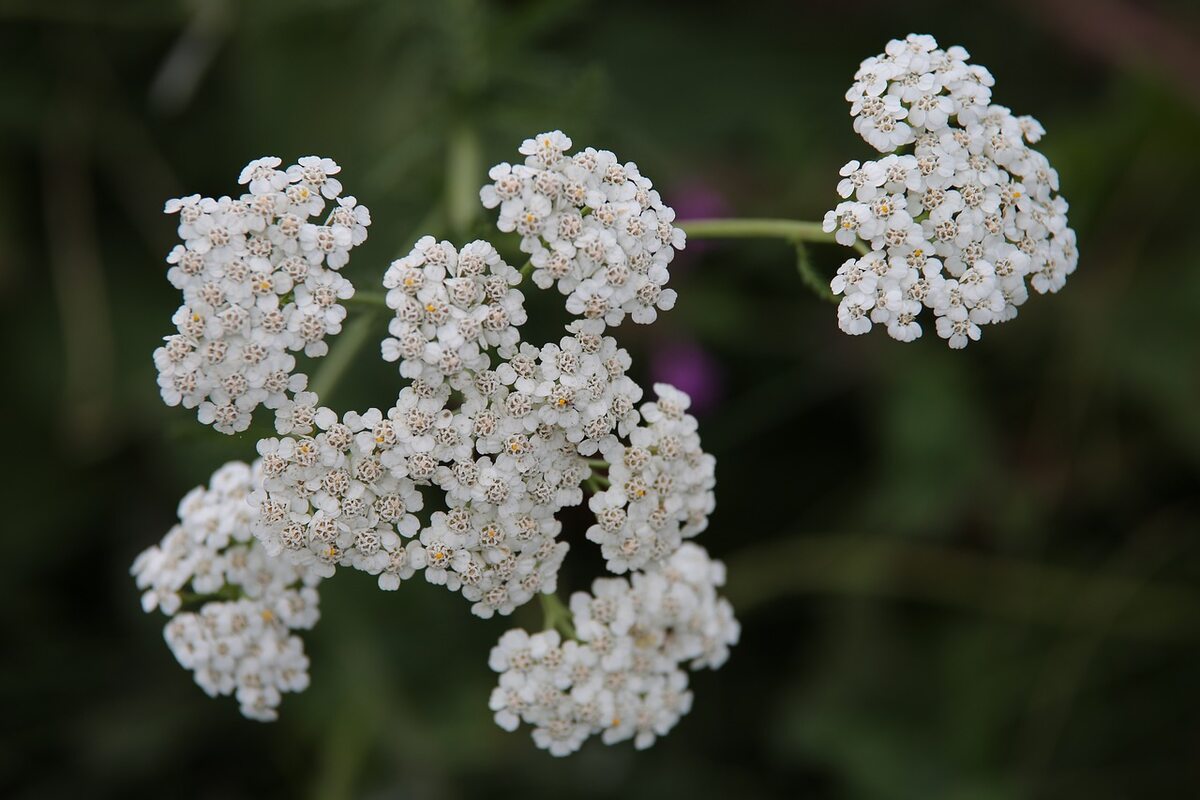
When we least expect, a silent threat creeps in the shadows… those pesky lawn weeds. We know dealing with weeds is a nuisance, and with so many, where do you begin? To control these uninvited guests, first, identify the type of weed. Here we bring you the 20 most common weeds in Oklahoma and how to identify and control them.
- Broadleaf Weeds
- Henbit (Lamium amplexicaule)
- Dandelion (Taraxacum officinale)
- Common Chickweed (Stellaria media)
- Curly Dock (Rumex crispus)
- Broadleaf Plantain (Plantago major)
- Black Medic (Medicago lupulina)
- Prostrate Knotweed (Polygonum aviculare)
- Purslane (Portulaca oleracea)
- Spotted Spurge (Euphorbia maculata)
- Common Yarrow (Achillea millefolium)
- Spiny Sowthistle (Sonchus asper)
- Ragweed (Ambrosia artemisiifolia)
- Pigweed (Amaranthus retroflexus)
- Narrowleaf Vetch (Vicia sativa)
- Evening Primrose (Oenothera biennis)
- Wood Sorrel (Oxalis stricta)
- Grassy Weeds
- FAQ
Broadleaf Weeds
Henbit (Lamium amplexicaule)
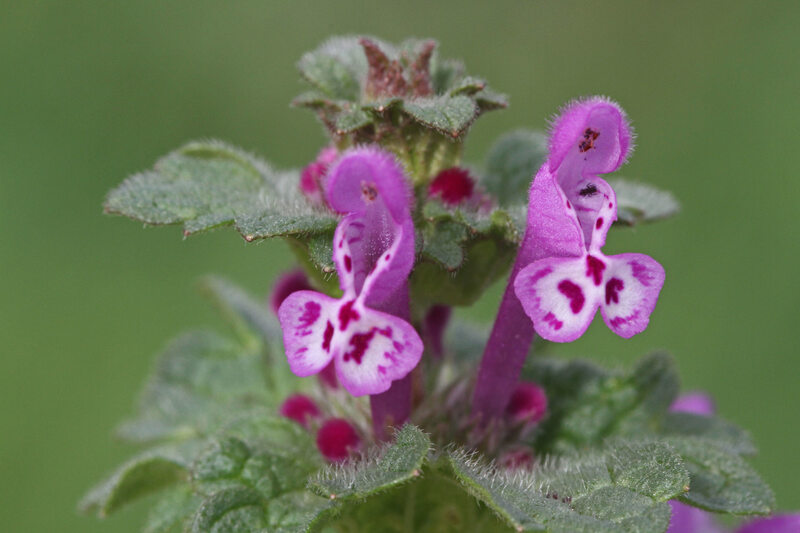
Also called dead nettle, henbit is a member of the mint family, though this weed is far from refreshing. Appearing in late winter, it is difficult to control once it has dominated the area, which can happen by early spring if left untreated.
Life cycle: Winter annual
Weed type: Broadleaf
Where it thrives: Thrives in fertile soil, but will also grow in sandy soils. Prefers full to partial shade, but tolerates sun.
How to identify henbit: Hairy and rounded leaves with deep veins. Square stems. Purple, tubular flowers.
How to get rid of henbit: Henbit is easy to control with pre-emergent herbicides applied in early to mid-September. If the treatment window for pre-emergent application is missed, homeowners can control henbit with post-emergent herbicides in October or November. Two to four applications might be needed.
Pro tip: You can apply corn gluten meal in late summer as an organic pre-emergent herbicide option.
Dandelion (Taraxacum officinale)
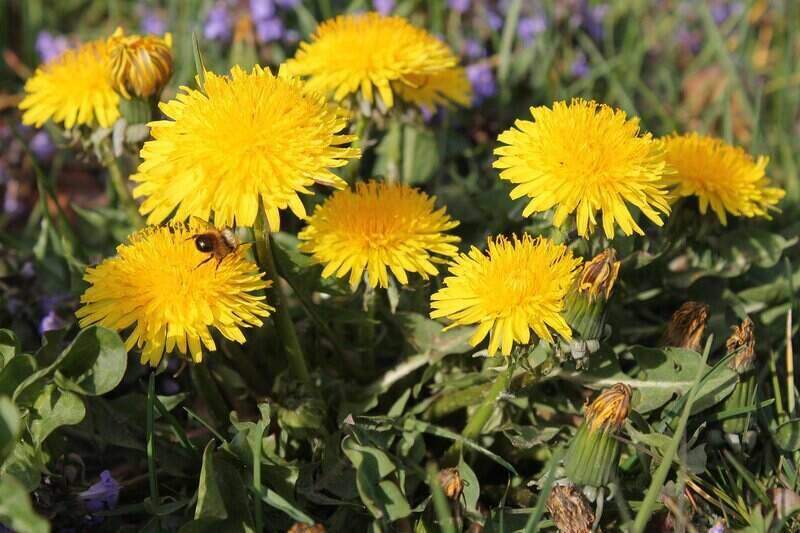
Also called lions-tooth or puffball, dandelion is a hardy perennial weed. It has a strong taproot that grows deep into the soil and rosettes above the ground that last the entire year. Blowing the parachute-like seeds might even grant you a wish, but at the cost of spreading the infestation in your lawn or for miles around.
Life cycle: Winter perennial
Weed type: Broadleaf
Where it thrives: Can tolerate a wide variety of soils, but prefers soils with low calcium and high levels of nitrogen and potassium. Dandelions can indicate acidic soil conditions.
How to identify dandelion: Bright yellow flowers that bloom in April. Produces a seed head in the form of a puffball. Long serrated leaves that point back to the center of the rosette.
How to get rid of dandelion: Dig out as much of the taproot as possible in early spring. You can also use a spring pre-emergent herbicide application to avoid the establishment of new weeds since dandelions can regenerate from fragments of roots. You can also use a broadleaf post-emergent herbicide during fall, which is generally more effective on perennials.
Common Chickweed (Stellaria media)
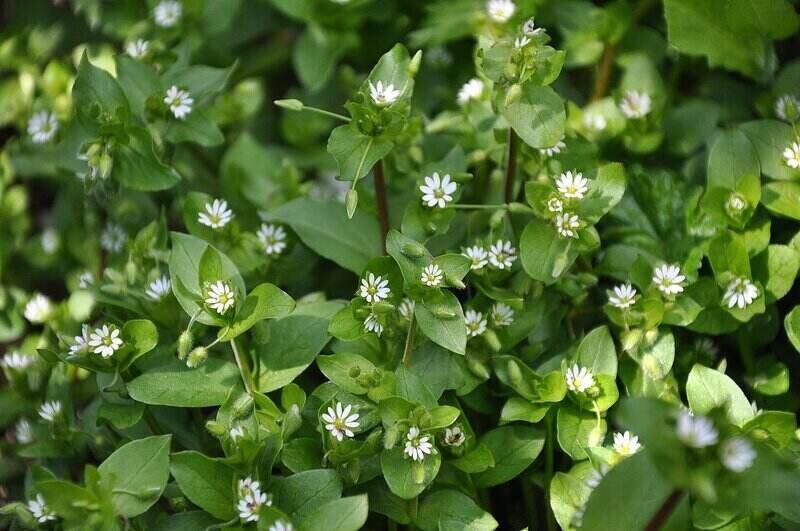
Contrary to what the name might suggest, chickweed does not look like a chicken. This winter annual, also popularly known as starweed or winterweed, easily spreads through turfgrass. It emerges in late summer, and if left untreated, can creep into your lawn creating large, dense patches.
Life cycle: Winter annual
Weed type: Broadleaf
Where it thrives: Prefers nitrogen-rich, moist, fertile soils. Grows best under cool, humid weather and shade. Doesn’t tolerate a dry, hot climate and can indicate poorly-drained soil.
How to identify chickweed: The stems are slim, with a row of fine hairs on one side. Noticeable small white flowers grouped in clusters.
How to get rid of chickweed: Chickweed has a shallow root system, which makes it easy to manually pull the weed out. You can use a trowel to dig up the roots if the weed is too intertwined with the grass. Easily controlled with post-emergent herbicides during fall and early spring, while plants are still small.
Curly Dock (Rumex crispus)
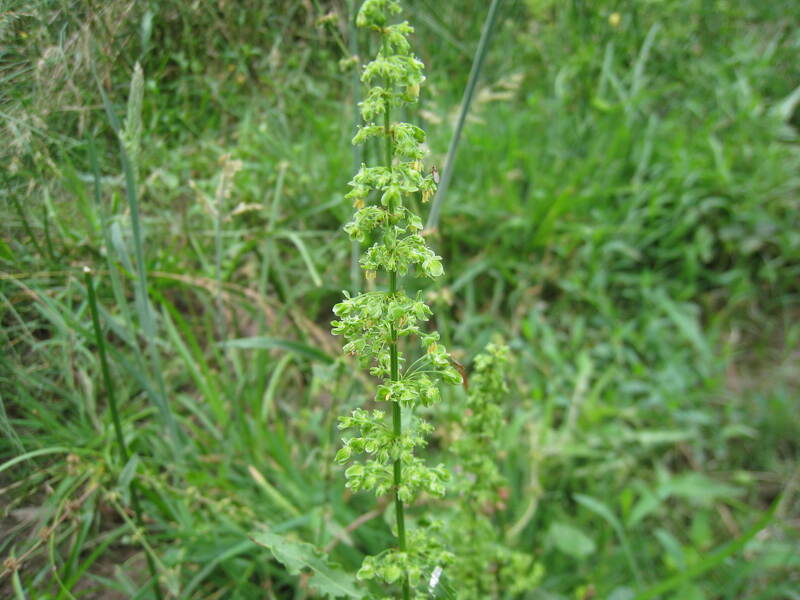
This broadleaf weed is commonly found in turfgrass as a rosette and can reach 2 to 3 feet in height. Its taproot grows deeply into the soil. An opportunistic weed, curly dock grows more intensively when the turfgrass is under heat stress.
Life cycle: Summer perennial
Weed type: Broadleaf
Where it thrives: Prefers areas with full sun and moist to dry, nutrient-rich soils
How to identify curly dock: Light green leaves with wavy borders show up along with spring, and later gain a reddish hue. When left uncontrolled, small green flowers bloom in clusters.
How to get rid of curly dock: It can be difficult to control once established. When still small, spring post-emergent herbicide applications can be effective. Once established, applying herbicides in the fall might be more effective, but more than a single application will be necessary.
Broadleaf Plantain (Plantago major)
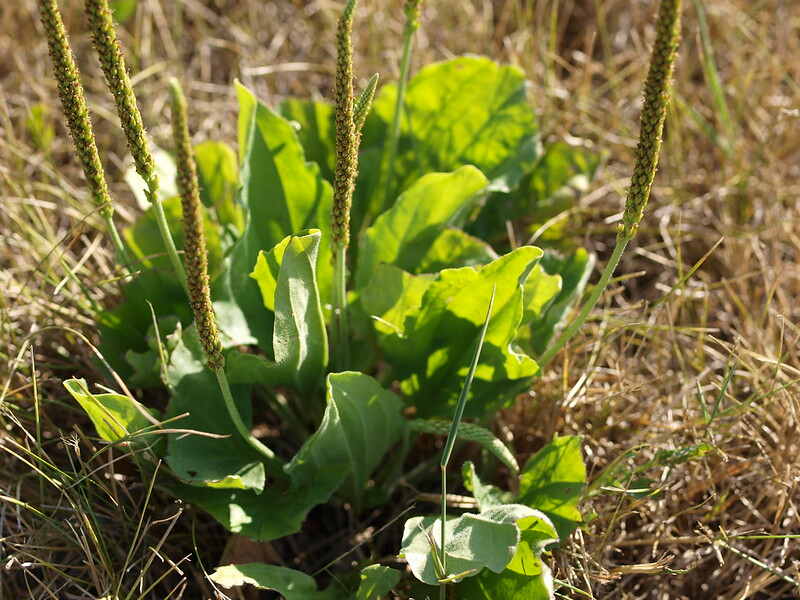
Broadleaf plantain is a perennial and one of the most common lawn weeds. Although it has edible seeds, broadleaf plantain is not related to the banana type we know — so please don’t try to eat it! Often found on roadsides as well as in turfgrasses, its rosette grows very close to the ground, crowding out the turf. This characteristic makes this weed particularly good at resisting mowing.
Life cycle: Summer perennial
Weed type: Broadleaf
Where it thrives: Can thrive in most soils, wet or dry, adapting very well in heavy and compacted soils. Remaining green throughout the winter and drought periods, it grows in full sun and partial shade.
How to identify plantain: The leaves have an elliptical form and rest flat on the ground, with wavy borders and prominent veins. Short hairs make it harshly textured. Small flowers grow along the upward-pointing stems.
How to get rid of plantain: The short taproot makes it easy for hand pulling. If only a few are present on your turf, this might be a viable option. Spot treatment with post-emergent herbicides will also do the trick.
Black Medic (Medicago lupulina)
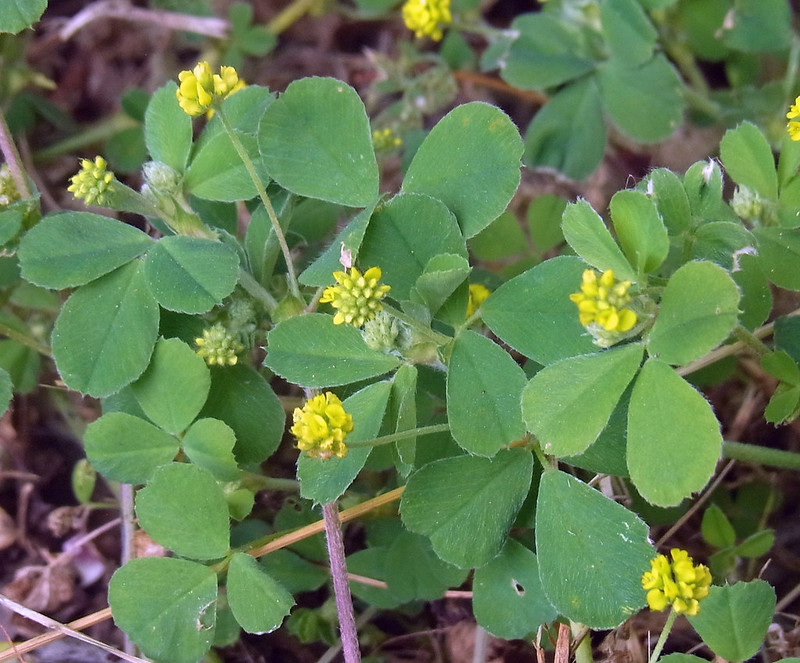
Frequently mistaken for white clover — as both often grow together — black medic creeps into your lawn as a low-grower. With a taproot that grows deeply into most soil types, the stems grow prostrate along the ground.
Life cycle: Summer annual weed that can behave as a perennial when winters are mild
Weed type: Broadleaf
Where it thrives: Thrives in full sun and soils with low nitrogen levels
How to identify black medic: Each leaf has three leaflets, very similar to other clover leaves. The stems spread close to the ground. Small yellow flowers in a dense cluster emerge from amongst the leaves.
How to get rid of black medic: Nitrogen fertilization is very effective at preventing black medic. If existing weeds are already established on the lawn, removal is needed. Hand pulling is effective if dealing with a few of them, but for bigger infestations, post-emergent broadleaf herbicide applications will be needed.
Prostrate Knotweed (Polygonum aviculare)
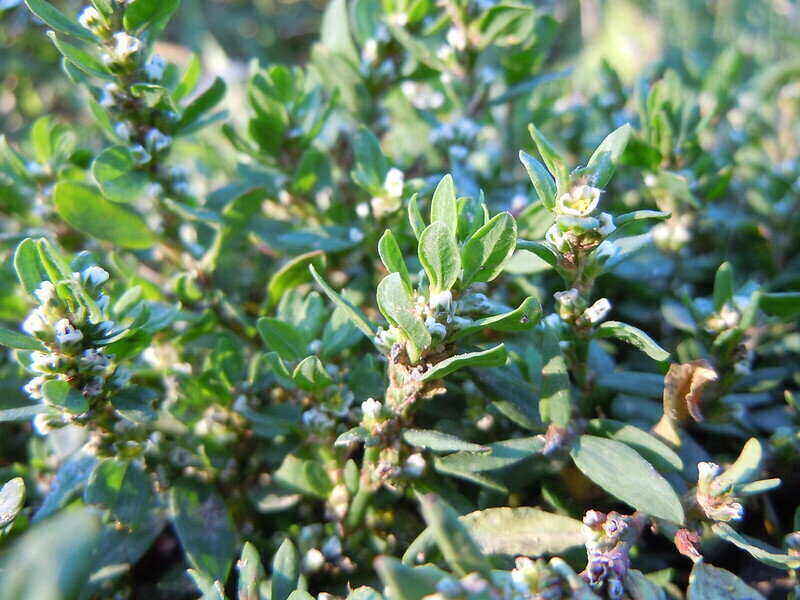
Out of the other warm-season annuals, knotweed is the first to appear when spring shows up, germinating with the first warm days of the season. If this weed is growing in your lawn, it is a strong indicator of soil compaction.
Life cycle: Summer annual
Weed type: Broadleaf
Where it thrives: Well adapted to compacted soil, usually appears in areas with high traffic
How to identify knotweed: Prostrate stems grow in branches to form a mat in the area, preventing the growth of the desired turfgrass. They form nodes that give a “knotted” appearance to the weed. Tiny, inconspicuous flowers bloom in the conjunction of the stem and the leaf.
How to get rid of knotweed: Preventing soil compaction with regular aeration will help avoid knotweed. Once established, it is very difficult to eradicate. Several post-emergent herbicide applications might be necessary.
Purslane (Portulaca oleracea)
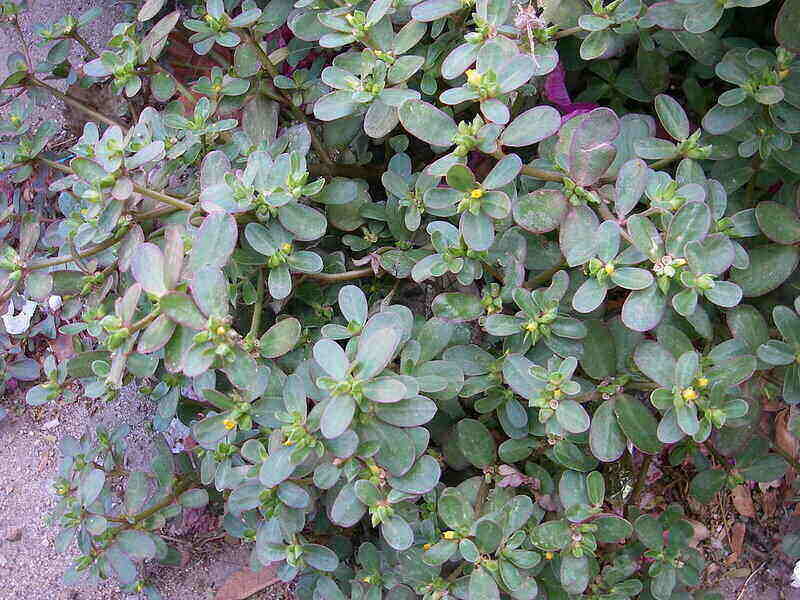
This succulent, warm-season annual easily takes over thin, newly established lawns. Also growing close to the ground to form a mat, purslane can produce shade on the turfgrass, restrictingits access to sunlight.
Life cycle: Summer annual
Weed type: Broadleaf
Where it thrives: Purslane grows in areas with full sun. Equipped with its taproot and secondary fibrous roots, this weed adapts to a variety of soils, including poor, compacted ones. However, purslane prefers soil that has good drainage and is fertile.
How to identify purslane: The stems have a red-brownish color that contrasts with the shiny, green, wedge-shaped leaves and bright yellow flowers.
How to get rid of purslane: Hand-pulling or spot-treating while still young can be an option when dealing with a small infestation. Purslane also doesn’t tolerate traffic or shade.
Spotted Spurge (Euphorbia maculata)
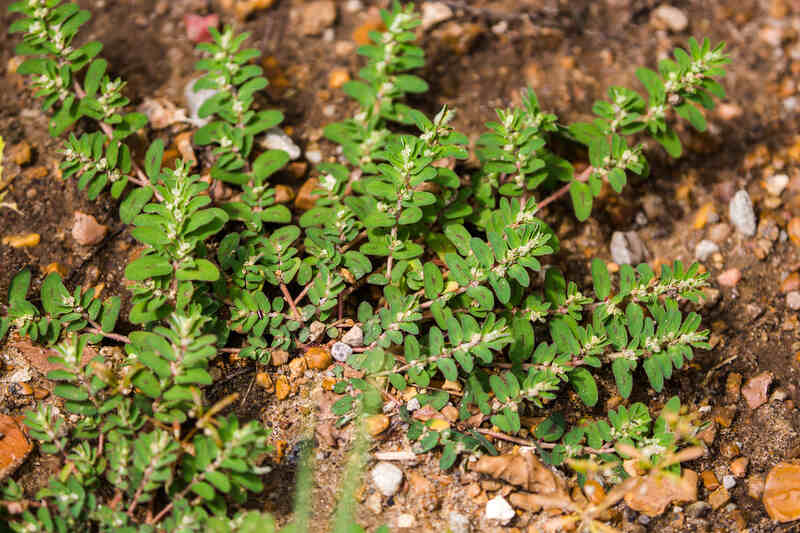
Spurge is one of the most common summer annual weeds. With abundant seed production, this weed grows from a single taproot. The prostrate stems grow very close to the ground, forming circular patches on the turf.
Life cycle: Summer annual
Weed type: Broadleaf
Where it thrives: Prefers full sun and warm temperatures. Grows in various soil types: loam, sand, clay, and rocky soils.
How to identify spurge: Leaves have a distinguishing brown spot in the center. When stems break, a milky sap is released.
How to get rid of spurge: It’s easy to remove a few large plants by hand since they grow from a single taproot. Because it produces abundant seeds and has no seed dormancy, it spreads easily. The best option to prevent spotted spurge is by improving turf density in the fall and spring through overseeding.
Common Yarrow (Achillea millefolium)
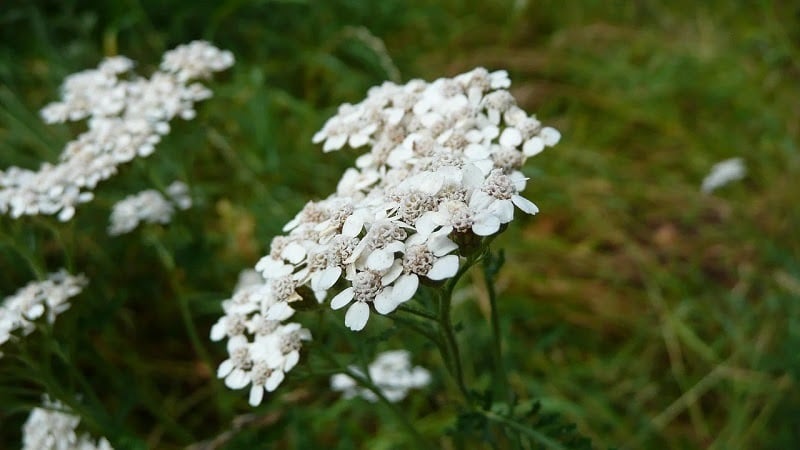
The common yarrow is an aggressive-growing weed that spreads through rhizomes and produces a characteristic scent. It hugs the ground as it grows, forming dense patches that resist mowing.
Life cycle: Summer perennial
Weed type: Broadleaf
Where it thrives: Prefers full sun and well-drained soils with high organic matter and neutral pH. Tolerates dry soils.
How to identify yarrow: Fern-like leaves that resemble cultivated carrots. Stems are covered with small hairs. The plant emits a distinctive scent.
How to get rid of yarrow: Cultural prevention methods are the way to go. Fertilizing your lawn to improve your turf’s growing conditions is effective in managing this weed.
Spiny Sowthistle (Sonchus asper)
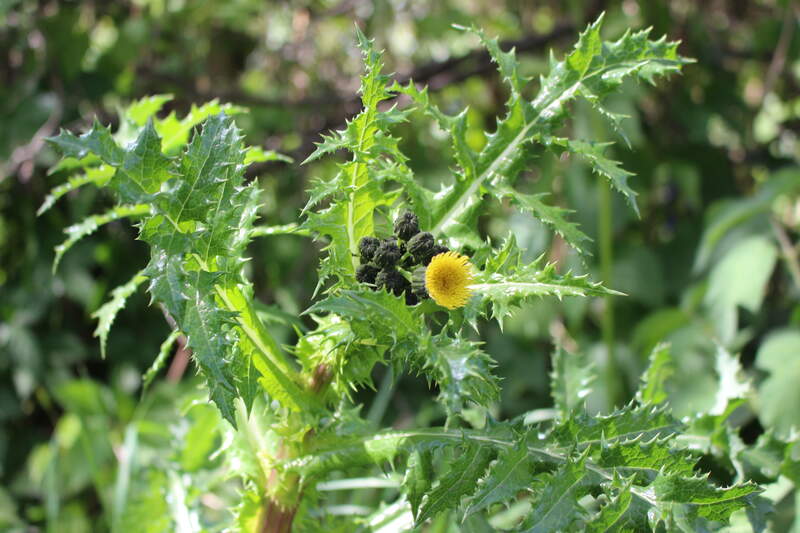
The thistle usually appears in newly established lawns where weed control strategies have not been applied before. The seeds spread by wind, rapidly taking over the area.
Life cycle: Summer annual, occasionally biennial
Weed type: Broadleaf
Where it thrives: Likes full sun and moist to dry conditions, growing in loam, clay, and gravelly soil. Can indicate an unhealthy lawn.
How to identify spiny sowthistle: Bright yellow flowerheads bloom in the summer. The leaves’ margins have soft, spiny teeth.
How to get rid of spiny sowthistle: If the infestation is still small, hand pulling is effective — just make sure to remove all of the taproot. Is also effectively controlled by post-emergent herbicides. Additionally, maintaining a dense and healthy lawn that can outcompete thistle is also a great strategy.
Ragweed (Ambrosia artemisiifolia)
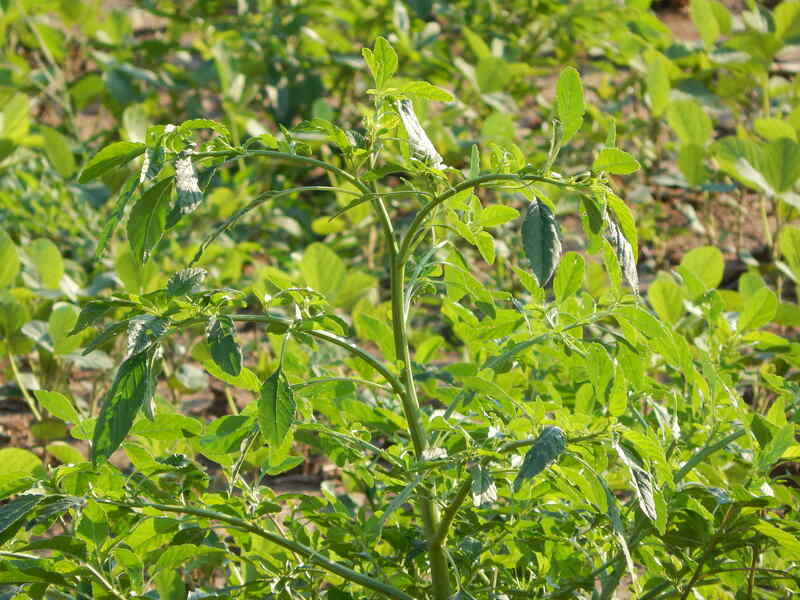
This weed is a member of the daisy family. Ragweed can cause contact dermatitis, hayfever, and other allergies, so if you’re sensitive to these things, consider carefully managing this weed.
Life cycle: Summer annual
Weed type: Broadleaf
Where it thrives: Thrives in full sun and poor soils
How to identify ragweed: The stems are hairy and branched, reaching up to 6 feet tall. Fern-like, compound leaves are also covered in fine hairs.
How to get rid of ragweed: Easy to control with pre-emergent or post-emergent herbicide applications.
Pigweed (Amaranthus retroflexus)
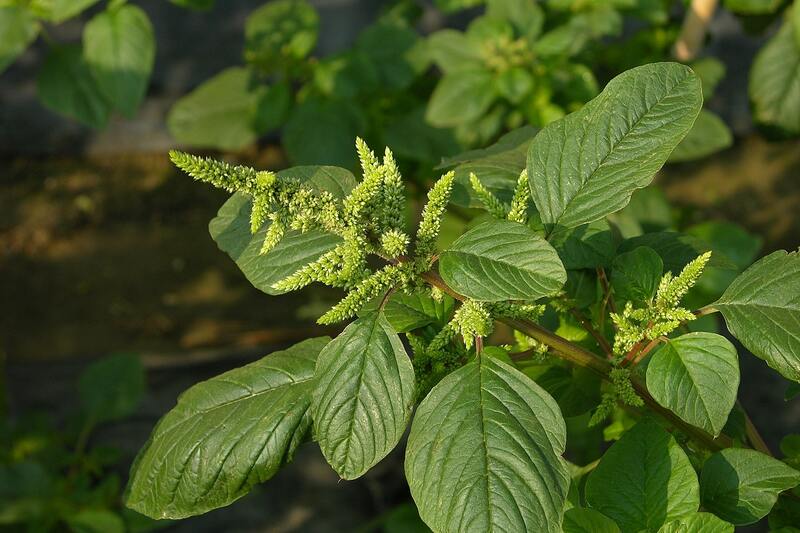
One of the most common pigweed species in Oklahoma is the redroot pigweed (Amaranthus retroflexus). A member of the Amaranth family, redroot pigweed is highly poisonous.
Life cycle: Summer annual
Weed type: Broadleaf
Where it thrives: Grows in full sun. Prefers a moist, neutral soil, and can grow in different textures, including clay, loam, and sand.
How to identify pigweed: Egg-shaped leaves and dense, small hairs along the stem.
How to get rid of pigweed: Easier to control with herbicides than other pigweed species, but can be herbicide-resistant. Can be prevented with cultural practices (such as regular mowing and keeping a dense turf to outcompete young plants) and pulling by hand.
Narrowleaf Vetch (Vicia sativa)
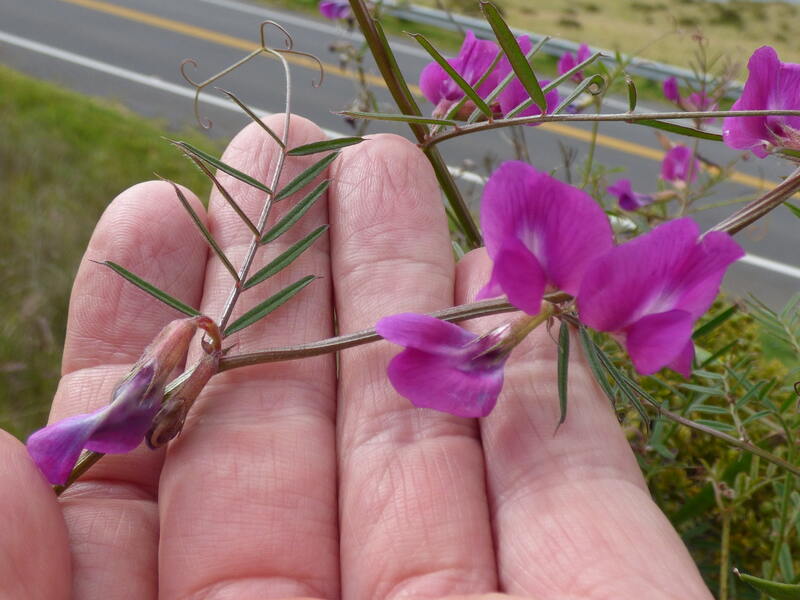
A member of the bean family, narrowleaf vetch is a climbing wildflower often used as a cover crop to fix nitrogen levels in the soil. It grows aggressively and self-seeds, spreading quickly in the affected area.
Life cycle: Summer annual or short-lived perennial
Weed type: Broadleaf
Where it thrives: Grows in full sun and partial shade in varying soil conditions, from dry, sandy soils to loamy or clay soils.
How to identify narrowleaf vetch: Purple flowers bloom in pairs during spring. Each leaf has five or six pairs of leaflets. Stems are long and purple-colored.
How to get rid of narrowleaf vetch: Its taproot breaks easily, making it hard to manually pull the weeds effectively. It’s better to use a digging tool to remove as much of the root as possible. If dealing with larger infestations, post-emergent herbicides are the way to go.
Evening Primrose (Oenothera biennis)
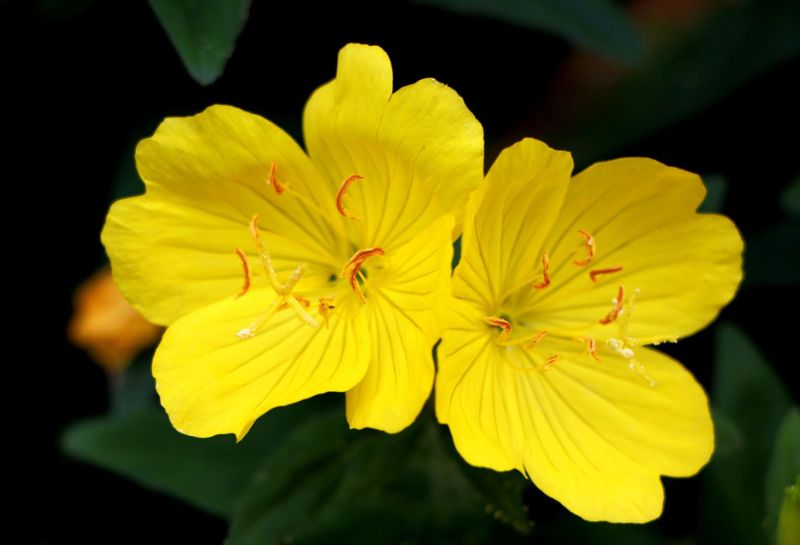
This native flower is often used in gardens, landscaping, and moon gardens. The evening primrose opens its petals in the evenings, attracting moths with its fragrance, hence the name.
Life cycle: Biennial, can also behave as a winter annual
Weed type: Broadleaf
Where it thrives: Full sun to partial shade. Grows in dry soils with good drainage.
How to identify evening primrose: Leaves are arranged in a rosette. They are egg-shaped and have a distinguishing pink or white midvein. Stems are hairy with a reddish hue. Flowers are golden yellow and have a unique behavior, opening from 4 p.m. to 10 p.m. and releasing a sweet fragrance.
How to get rid of evening primrose: Maintaining a healthy, strong lawn is the best way to deter evening primrose. Watering properly will prevent your soil from getting dry, a condition that this weed likes. Apply a post-emergent broadleaf herbicide if dealing with an infestation.
Wood Sorrel (Oxalis stricta)
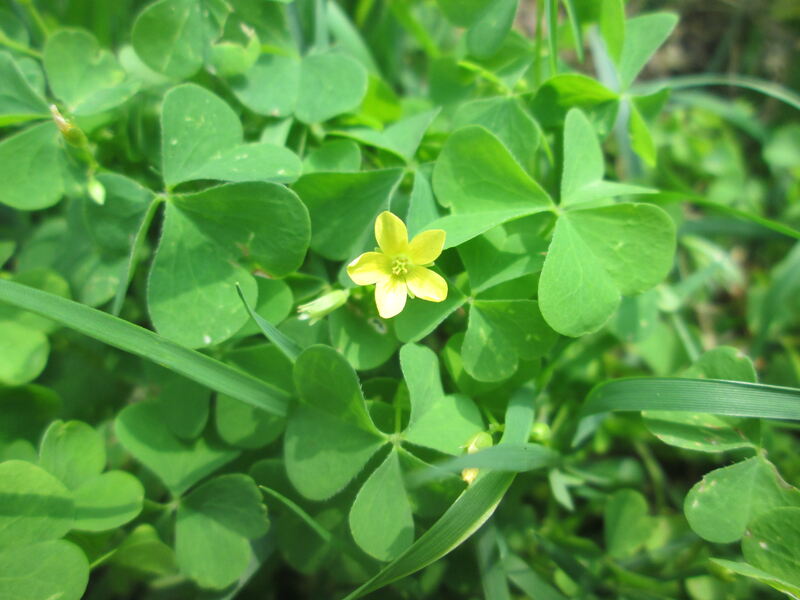
This aggressive perennial invades turfgrasses and gardens. Frequently confused with clover (learn about the differences in our article Clover vs. Oxalis), wood sorrel grows from mid-spring to late autumn.
Life cycle: Perennial
Weed type: Broadleaf
Where it thrives: Prefers alkaline, moist soils, but can also grow in poor soils. Grows in full sun to part shade.
How to identify wood sorrel: The stems grow erect and have a pink color. Each leaf has three heart-shaped leaflets with hairs at the edges. The flowers are bright yellow.
How to get rid of wood sorrel: Wood sorrel is best managed with pre-emergent herbicide applications in early spring. Once established, it is almost impossible to completely remove its rhizomes and stolons.
Grassy Weeds
Smooth Crabgrass (Digitaria ischaemum)
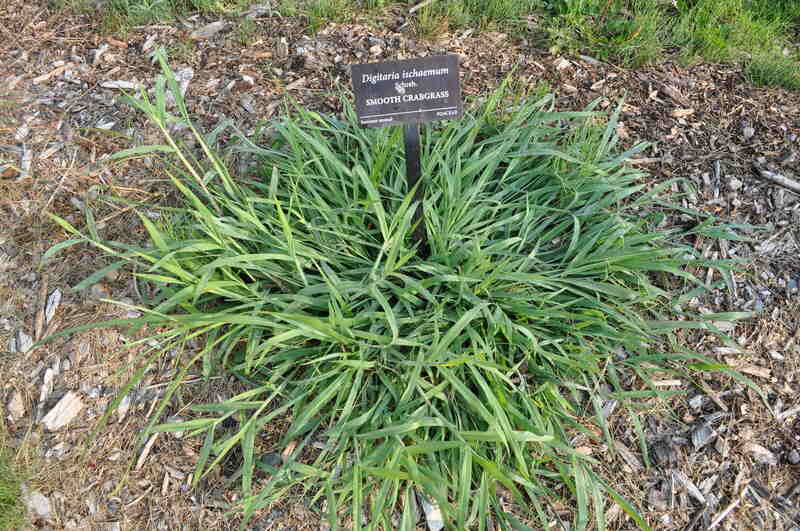
Often found invading thin or damaged turfgrass, smooth crabgrass is one of the most common grassy weeds. It usually indicates high soil temperatures (often found adjacent to concrete surfaces) and may grow in last season’s grub-damaged turf.
Appearing in the spring, it grows throughout the summer, eventually producing seeds that will germinate the following year in late winter/early spring, starting the cycle all over again.
Life cycle: Summer annual
Weed type: Grass
Where it thrives: It prefers heavier soil types but tolerates a variety of conditions: heat, drought, full sun, and partial shade. It is killed by frost. It can also be indicative of excess nitrogen in your lawn.
How to identify smooth crabgrass: Light-green colored, this weed has noticeable nodes from which the leaves grow in a zig-zag pattern. Large crabgrass (Digitaria sanguinalis) is distinguished from smooth crabgrass by the presence of hairs on the leaves’ surface.
How to get rid of smooth crabgrass: Mowing your lawn higher and fertilizing it with appropriate levels of nitrogen will increase lawn density and reduce the crabgrass’ advantages when competing with your turf.
Mulching your grass clippings can also inhibit the germination process, depriving the weed seeds of the sunlight they need to grow. The plant hugs the ground as it grows making it hard to hand pull once established.
Johnsongrass (Sorghum halepense)
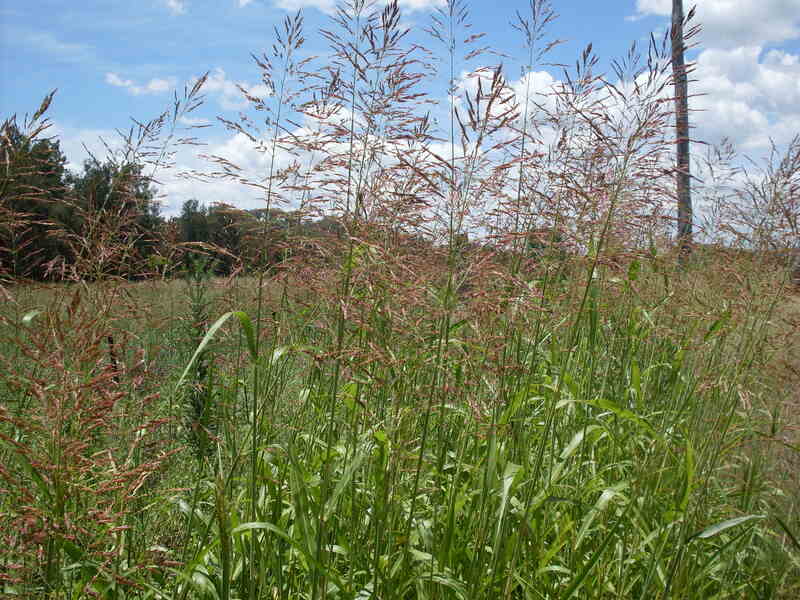
This warm-season grass spreads by dense rhizomes and also by seeds. Johnsongrass is native to the Mediterranean region, and it can be found in different conditions: from home lawns to wetlands and forest edges.
Life cycle: Perennial
Weed type: Grass
Where it thrives: Thrives in full sun. Tolerates a wide variety of soils, but prefers rich, fertile soil.
How to identify johnsongrass: Smooth leaves with a vein in the center. Stems are pink to reddish near the base.
How to get rid of johnsongrass: Hand-pulling works for small infestations. Larger ones are harder to control and require a combination of mowing and herbicide applications in early summer.
Annual Bluegrass (Poa annua)
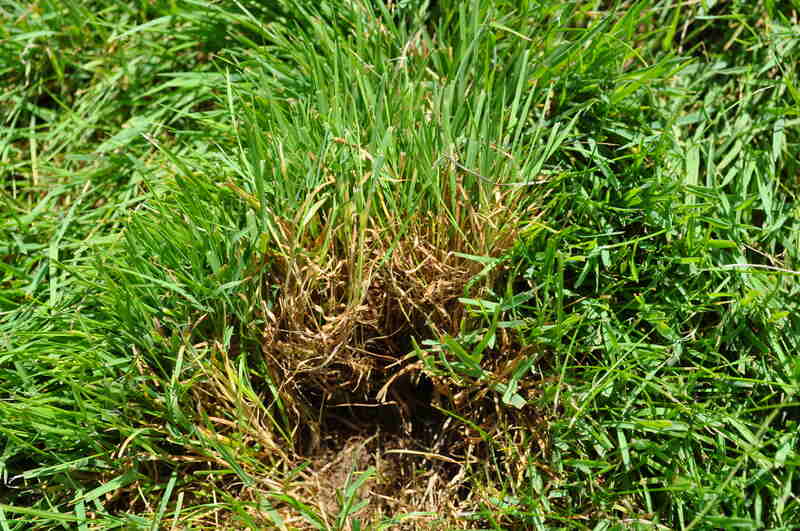
This annual, undesired grass grows fast and has a clump-forming habit. Primarily affecting lawns, annual bluegrass grows aggressively, producing abundant seeds that are spread by wind, animals, or water.
Life cycle: Winter annual
Weed type: Grass
Where it thrives: Prefers moist soils and shady areas.
How to identify annual bluegrass: The leaves are yellow-green colored, and whitish flowers distinguish this grass.
How to get rid of annual bluegrass: The main method of managing annual bluegrass is removing small plants to avoid further infestation. Seeds can lay dormant for years, so apply a pre-emergent herbicide during fall to prevent them from sprouting. Fertilizing your soil will also help prevent this weed.
Dallisgrass (Paspalum dilatatum)
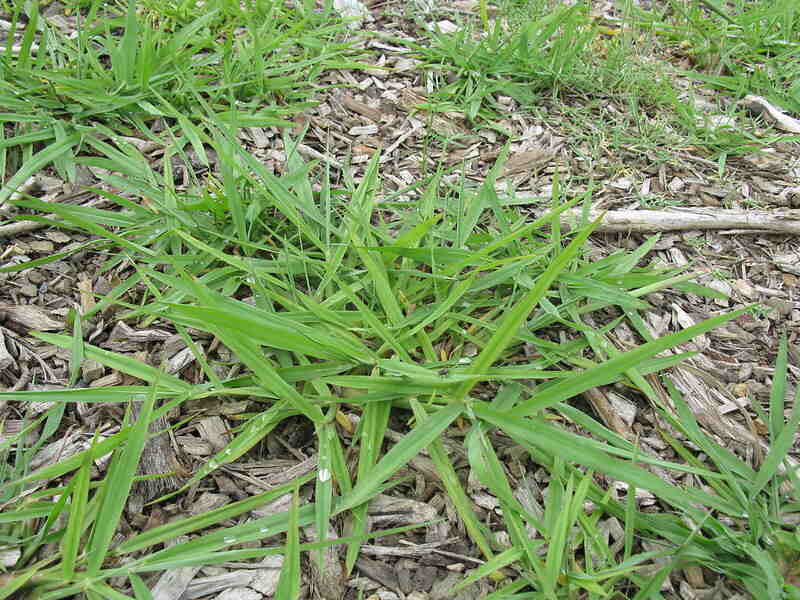
Dallisgrass is a clumping perennial that spreads aggressively through short rhizomes. Usually emerging in the spring, it invades home lawns, roadsides, and flowerbeds.
Life cycle: Perennial
Weed type: Grass
Where it thrives: Prefers moist conditions, such as heavily irrigated areas. It grows in full sun and partial shade.
How to identify dallisgrass: Dallisgrass has a mid-rib that differentiates it from other grass-like weeds. The seed heads are easily identifiable as well: a raceme with hairy spikelets. (Racemes are seed heads with spikelets attached along the end portion of the stem.)
How to get rid of dallisgrass: The biggest step is preventing dallisgrass from establishing. Dig out young plants and apply pre-emergent herbicide to prevent future growth. You can also spot-treat the site with a post-emergent herbicide.
FAQ
The following post-emergent herbicides are commonly used options. They control most winter and summer broadleaf weeds:
● 2,4‑D
● Banvel (dicamba)
● MCPP (mecoprop)
● 2,4‑DP
● DPC (Dichloprop)
The products above are commonly used on the following well-established lawns:
● Bermudagrass
● Kentucky bluegrass
● Tall fescue
● Perennial ryegrass
● Zoysiagrass
When it comes to grassy weeds, common herbicide options are:
● Pre-emergent herbicides
● Organic arsenicals*
● Kerb**
● Glyphosate
*Most commonly used on buffalograss, Bermudagrass, and Kentucky bluegrass. Other turfgrasses may suffer injury or death.
**Formulated only for Bermudagrass.
Pro Tip: Before you spray, remember to check the product label to make sure they’re safe to use on your turfgrass.
For perennial weeds, non-selective post-emergent herbicides are typically used. A few examples are:
● Dowpon-M (dalapon)
● Roundup
Again, some herbicides cannot be used on certain turfgrasses, so read the label carefully before you apply.
These are the best times to control weeds according to their seasonal growth habit:
● Winter broadleaf weeds: Apply post-emergent herbicides during thefall season, during October and November, when plants are still small. If this opportunity is missed, late winter and early spring applications with higher amounts of product are also effective.
● Summer broadleaf weeds: Apply post-emergent broadleaf herbicides during the spring season, April and May, for effective control.
● Summer grassy weeds: Apply preemergence herbicides two weeks before weed seed germination or post-emergent herbicide in May and June.
● Winter grassy weeds: Apply preemergence herbicides two weeks before weed seed germination or post-emergent herbicide in October and November. Winter annuals can also receive post-emergent applications in December and January.
Post-emergent herbicides usually need two to four applications, with a 10- to 14-day window between treatments to be effective.
Don’t Let the Weeds Creep You Out
You don’t need to try identifying your weeds on your own. If you’re unsure about the weeds infesting your lawn and how to get rid of them, we have an Oklahoma lawn care pro near you! We have trusted lawn care pros in Tulsa, Oklahoma City, Del City, Norman, Edmond, and many more cities across the Sooner State.
Additional sources:
Consumer Broadleaf Weed Control for Lawn in Oklahoma
Controlling Grassy Weeds in Home Lawns
Controlling Weeds in Home Lawns
Main Image Credit: Pixabay